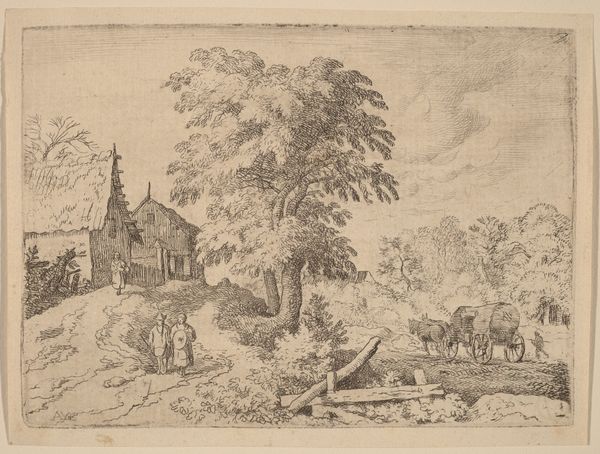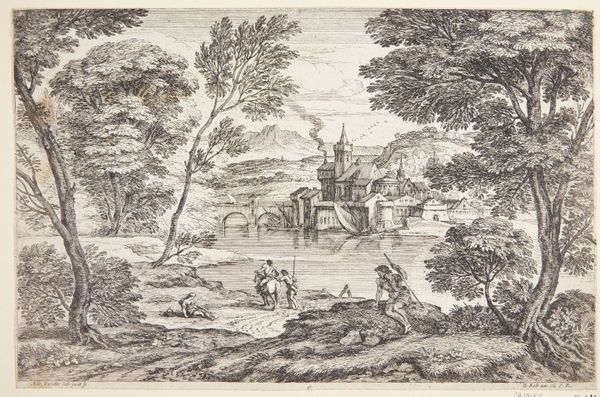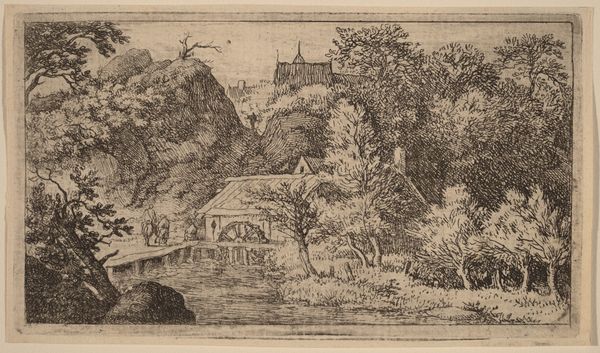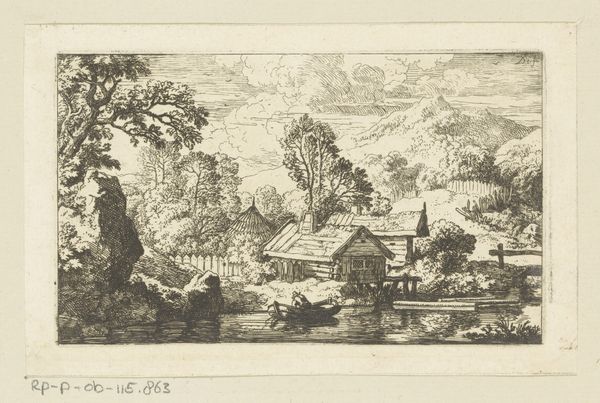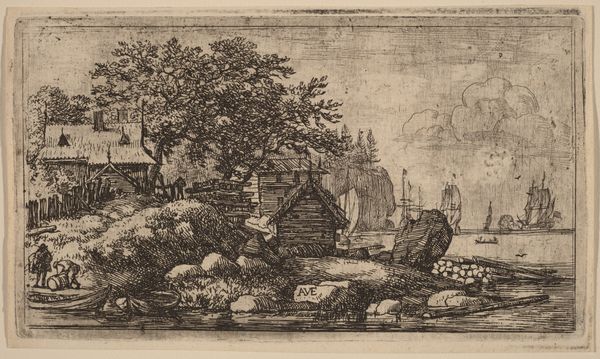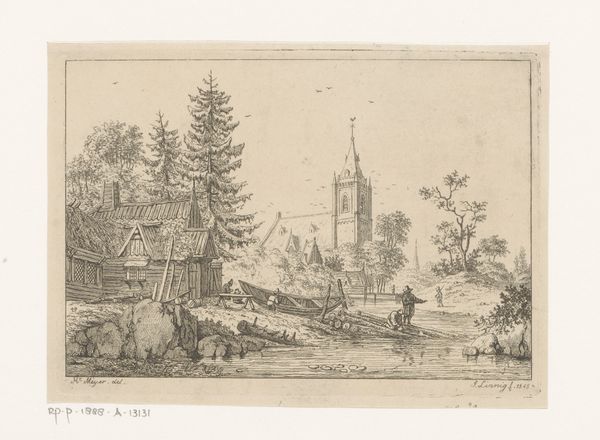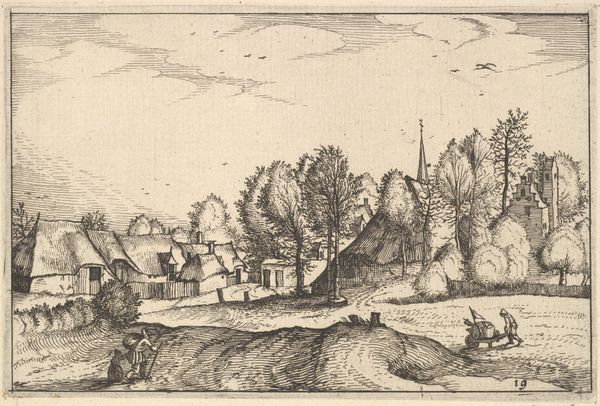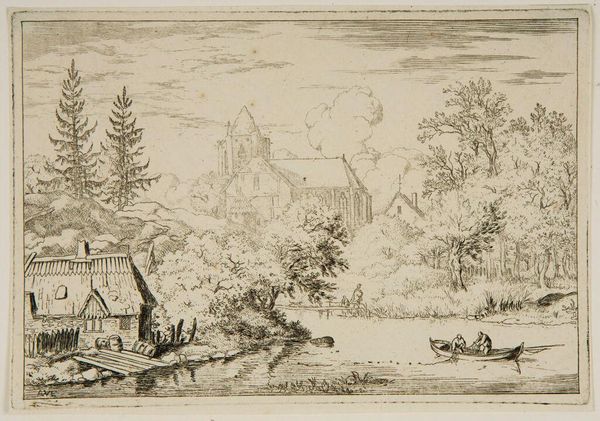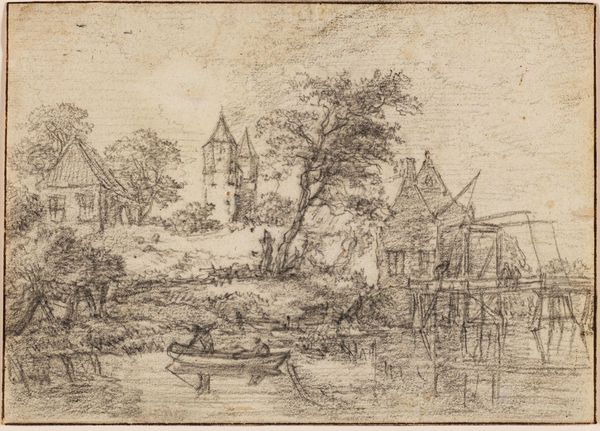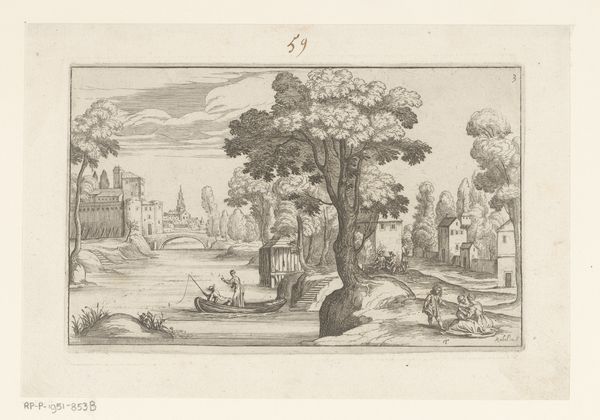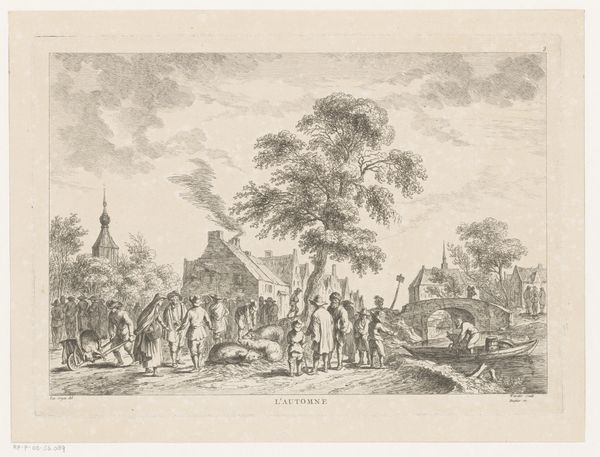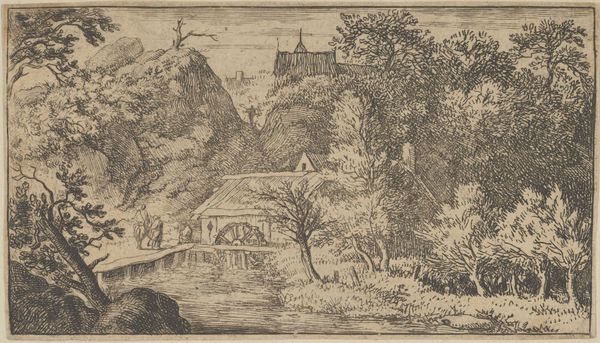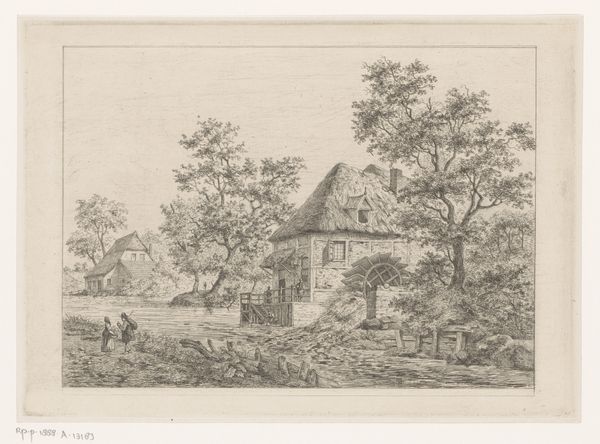
The Casks and Planks at the Back of the River 1621 - 1675
0:00
0:00
drawing, print, etching
#
drawing
#
baroque
#
dutch-golden-age
# print
#
etching
#
landscape
#
river
Dimensions: Plate: 3 15/16 × 5 13/16 in. (10 × 14.7 cm) Sheet: 4 1/8 in. × 6 in. (10.5 × 15.2 cm)
Copyright: Public Domain
Curator: Allart van Everdingen's etching, "The Casks and Planks at the Back of the River," likely created sometime between 1621 and 1675, offers a glimpse into a Dutch landscape during its Golden Age. Editor: It’s striking how immediate this feels despite its age; the grittiness of the etching actually enhances the depiction of labor, and the implied scent of wet wood. Curator: Absolutely. And look at the centrality of water and timber to this scene. Casks and planks, implying industry; the river itself suggests commerce, transport. In many cultures, water symbolizes both life and the subconscious. The inclusion of people fishing might imply providence or human sustenance. Editor: Which gets at the materiality here. Van Everdingen made use of a print medium – etching – to widely distribute imagery of the source and fruits of labor. The repetition inherent in the print process mirrored the material cycles he depicts. You’ve got these recurring elements of wood and water constantly repurposed, reflecting the socio-economic dependencies. Curator: Notice, also, the contrast between the modest, ramshackle structures along the riverbank and the towering church looming in the background. Perhaps this suggests a hierarchy of the earthly versus the divine. Editor: Perhaps…or the economic power wielded by religious institutions. Were they directly involved in any facet of this region’s economy, extracting labor in some form or other? The process and source of material acquisition should always be under scrutiny. Curator: A valid point. Either way, Everdingen’s skill lies in evoking the lived experiences, imbuing the landscape with layered cultural meaning through these well-placed symbolic touches. Editor: For me, the enduring value is that he demonstrates how crucial the process and location are to shaping our human experience of place, no matter how sublime it might seem on the surface.
Comments
No comments
Be the first to comment and join the conversation on the ultimate creative platform.
